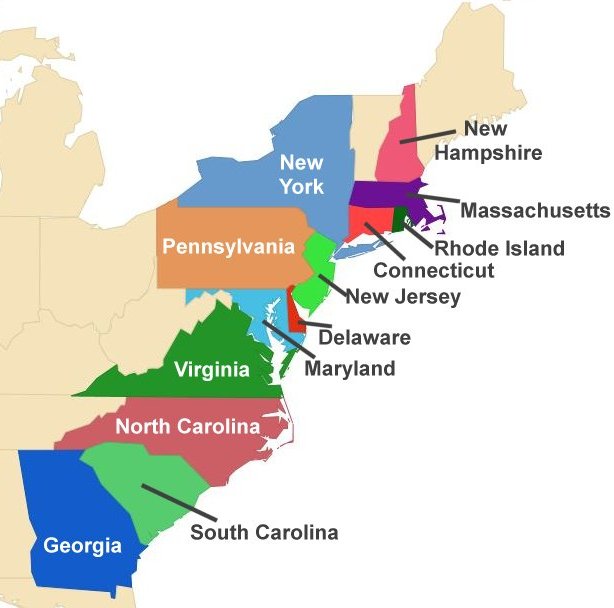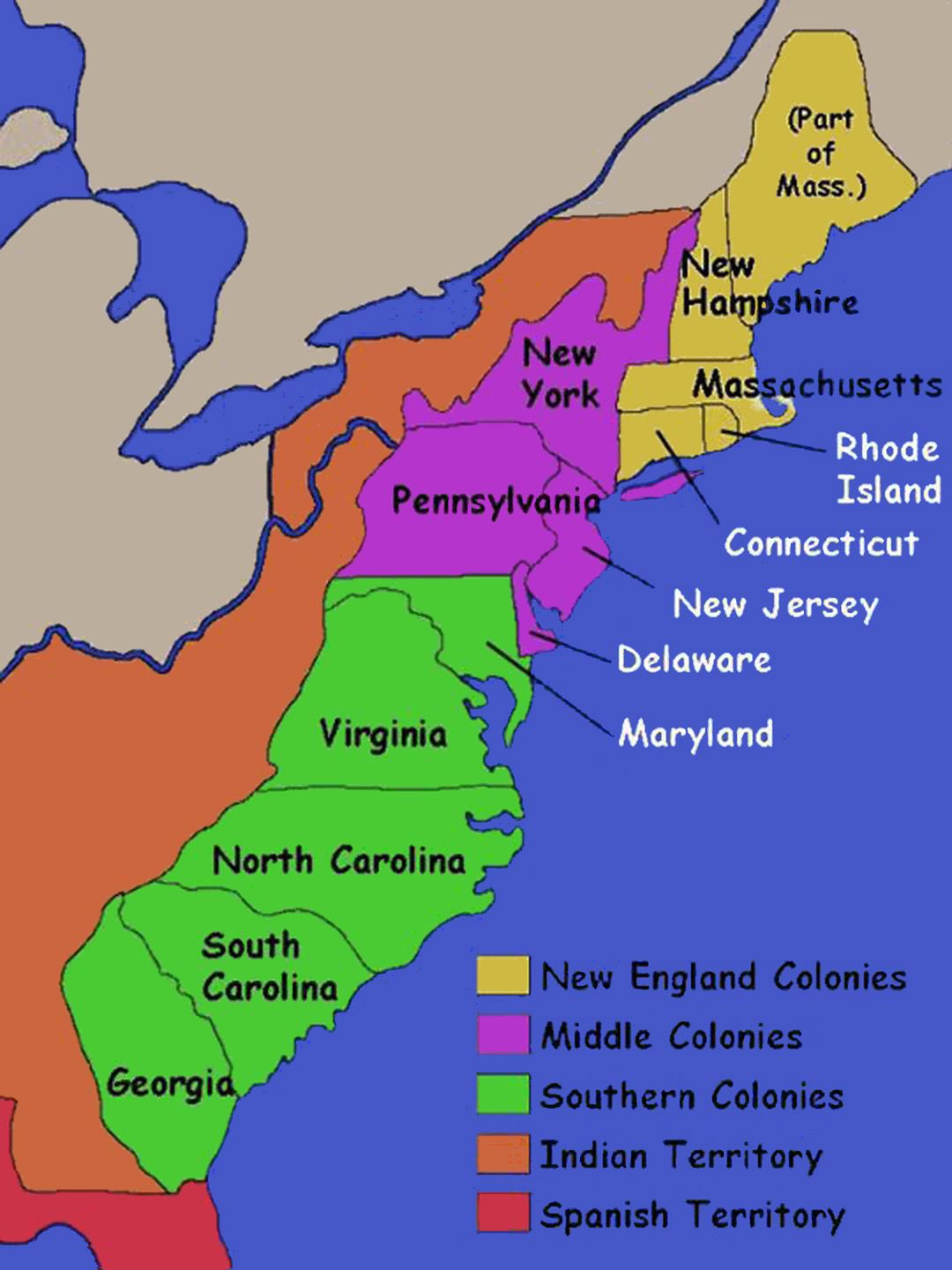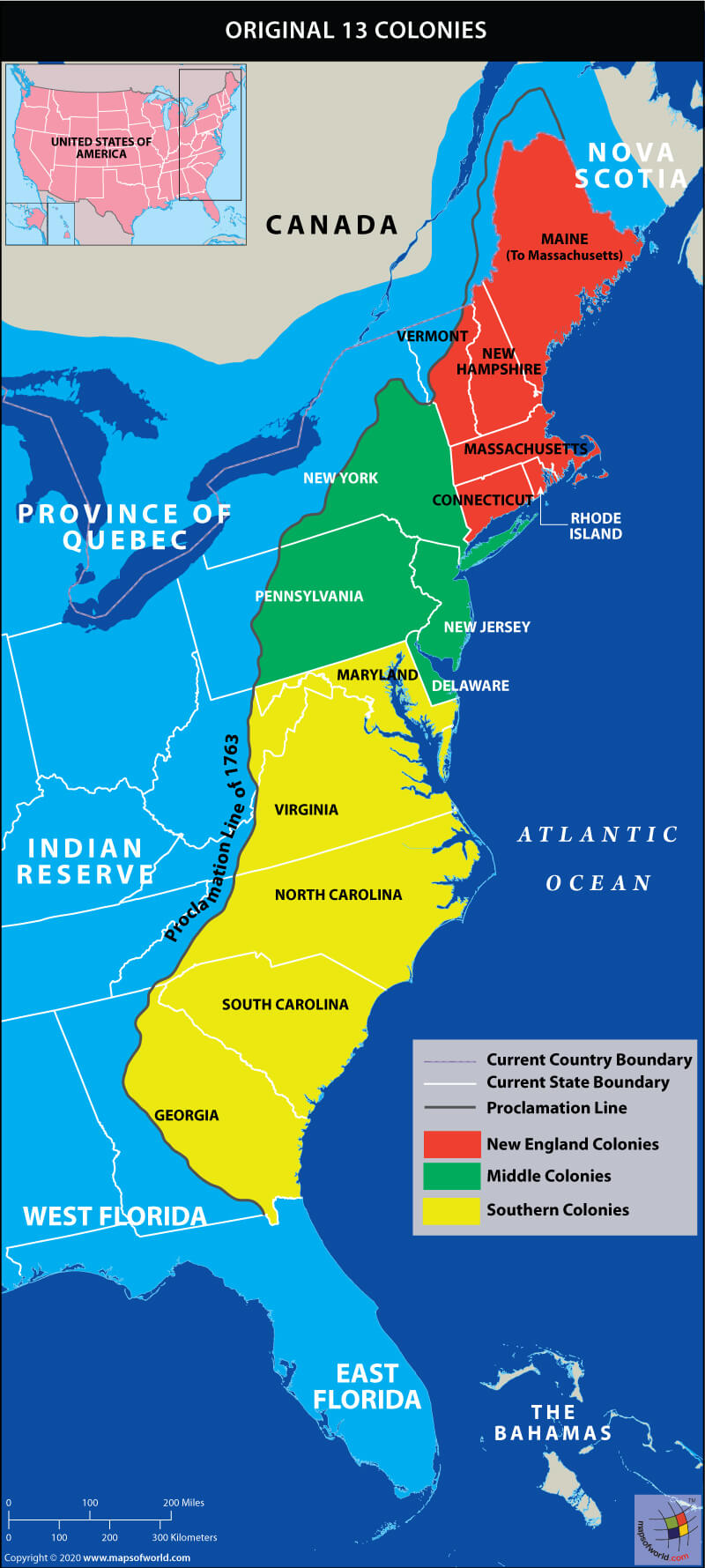
The Crucible of a Nation: Unpacking the 13 Colonies of America
Before the United States declared its independence, before the iconic figures of Washington, Jefferson, and Franklin etched their names into history, a grand, often brutal, experiment in human endeavor was unfolding along the eastern seaboard of North America. Thirteen distinct colonies, each born from a unique blend of ambition, desperation, and idealism, were slowly, painstakingly, forging the bedrock of a future nation. Their story is one of profound challenges, diverse motivations, and an evolving identity that would ultimately lead to revolution.
From the first precarious foothold at Jamestown in 1607 to the eve of the American Revolution in 1775, these settlements transformed from isolated outposts into vibrant, self-governing entities. Their journey was not monolithic; it was a complex tapestry woven from disparate threads: religious zealots seeking sanctuary, landless farmers yearning for opportunity, indentured servants chasing a fresh start, and, tragically, enslaved Africans forcibly brought to fuel a burgeoning agricultural economy.
The Southern Seedbeds: Tobacco, Toil, and the Birth of Self-Governance

The story often begins in the South, with Virginia, the first permanent English settlement in North America. Established by the Virginia Company of London, Jamestown was initially a commercial venture, driven by the elusive promise of gold. The early years were catastrophic, marked by disease, famine, and conflict with the Powhatan Confederacy. "There were never Englishmen left in a foreign country in such misery as we were in this new discovered Virginia," wrote George Percy, an early colonist, vividly describing the "starving time" of 1609-1610.
Salvation for Virginia arrived in the unlikely form of tobacco. John Rolfe’s successful cultivation of a milder, sweeter variety created an economic boom, transforming the colony’s fortunes but also creating an insatiable demand for land and labor. This demand laid the foundation for the plantation system and, crucially, for the institution of slavery. In 1619, a pivotal year, the first enslaved Africans arrived in Virginia, marking a dark stain on the nascent nation’s soul. That same year also saw the establishment of the House of Burgesses, the first representative assembly in the American colonies, signaling an early, albeit limited, step towards self-governance.
Further south, Maryland was founded in 1632 by Lord Baltimore as a proprietary colony, intended as a haven for English Catholics facing persecution at home. While economic motives were also strong, Maryland’s Act of Toleration in 1649 was a landmark, granting religious freedom to all Trinitarian Christians – a significant, if imperfect, step towards religious pluralism in the colonies.
The Carolinas, initially one vast territory, were chartered in 1663 and later divided into North and South. North Carolina developed as a colony of small farms and independent frontiersmen, while South Carolina, with its fertile lowlands and natural harbors, became a hub for large-scale rice and indigo plantations, heavily reliant on enslaved labor from the Caribbean and Africa. Charleston, its principal city, became one of the wealthiest and most sophisticated urban centers in colonial America, built on the backs of thousands.
Finally, Georgia, the last of the thirteen colonies, was founded in 1732 by James Oglethorpe. His vision was twofold: a philanthropic experiment to resettle England’s "worthy poor" (debtors and landless laborers), and a military buffer zone against Spanish Florida. Initially, Georgia prohibited slavery and the sale of rum, but these restrictions were eventually lifted due to economic pressures from neighboring colonies, and it, too, became a plantation society.
The New England Experiment: Piety, Profit, and Puritan Dogma
Northward, a different kind of colonial venture was taking shape. New England was primarily driven by religious ideals. The Pilgrims, a group of Separatists seeking to escape the perceived corruption of the Church of England, landed at Plymouth in 1620. Before disembarking, they drafted the Mayflower Compact, a revolutionary document that established a civil government based on the consent of the governed. "Having undertaken, for the Glory of God, and Advancement of the Christian Faith, and the Honour of our King and Country, a Voyage to plant the First Colony in the Northern Parts of Virginia," the Compact declared their intention to "covenant and combine ourselves together into a civil Body Politick."
A decade later, in 1630, a much larger wave of Puritans, led by John Winthrop, established the Massachusetts Bay Colony. Winthrop famously articulated their mission as building a "City Upon a Hill," a model Christian society for the world to emulate. This vision profoundly shaped New England’s social, political, and economic life. Education was highly valued for religious literacy, leading to the founding of Harvard College in 1636. Town meetings became the bedrock of local governance, fostering a strong sense of community and civic participation.

However, Puritan intolerance also led to dissent and the formation of new colonies. Roger Williams, advocating for religious freedom and fair dealings with Native Americans, was banished from Massachusetts and founded Rhode Island in 1636, establishing it as a haven for religious dissenters, including Baptists, Quakers, and Jews. Anne Hutchinson, another outspoken dissenter, was also exiled for challenging Puritan authority.
Connecticut was founded in 1636 by Thomas Hooker, who led his congregation from Massachusetts seeking more fertile land and greater political freedom. The Fundamental Orders of Connecticut (1639) are considered one of the first written constitutions in the Western world, further demonstrating the colonists’ evolving commitment to self-governance and limited government. New Hampshire, initially a part of Massachusetts, became a separate royal colony in 1679, largely driven by economic interests like fishing and timber.
The Middle Ground: Diversity, Commerce, and the "Breadbasket"
Nestled between the religiously fervent New England and the agrarian South lay the "Middle Colonies," a region characterized by its astonishing diversity, economic dynamism, and relative religious tolerance.
New York began as New Netherland, a Dutch colony established in 1624. Its strategic location at the mouth of the Hudson River made New Amsterdam (present-day New York City) a vital trading post. The colony was remarkably diverse from its inception, home to Dutch, Walloons, French, Germans, Scandinavians, and Africans (both free and enslaved). In 1664, the English seized New Netherland from the Dutch, renaming it New York in honor of the Duke of York (later King James II). This conquest brought a new layer of English administration but did little to diminish the colony’s vibrant multicultural character.
Pennsylvania, founded in 1681 by William Penn, was perhaps the most ambitious of the "Holy Experiments" in religious freedom. Penn, a Quaker, envisioned a colony based on pacifism, fair dealings with Native Americans, and complete religious tolerance for all monotheists. Philadelphia, the "City of Brotherly Love," quickly became the largest and most prosperous city in colonial America, a bustling center of commerce, intellectual exchange, and ethnic diversity. Germans, Scots-Irish, and Welsh immigrants flocked to Pennsylvania, making it a true melting pot.
New Jersey, originally granted to two proprietors by the Duke of York, developed a similarly diverse population. Its fertile lands attracted settlers from New England, New York, and Europe, contributing to its reputation as part of the "breadbasket" colonies, renowned for their abundant grain production.
Finally, Delaware, originally part of New Sweden before being absorbed by New Netherland and then Pennsylvania, eventually gained its own assembly in 1704, though it remained under the proprietary governor of Pennsylvania until the Revolution. Its strategic location on the Delaware River made it important for trade and shipbuilding.
Threads of Connection and the Seeds of Discontent
Despite their distinct origins and characteristics, the thirteen colonies shared common experiences that gradually forged a nascent American identity. All were subject, in theory, to the authority of the British Crown and Parliament, operating under a system of mercantilism designed to enrich the mother country. Raw materials flowed from the colonies to Britain, which in turn sold manufactured goods back.
Yet, a spirit of self-reliance and independence was growing. The vast distance from England, combined with Britain’s policy of "salutary neglect" – a lax enforcement of parliamentary laws – allowed the colonies to develop their own political institutions and economic practices. The Mayflower Compact, the House of Burgesses, the Fundamental Orders of Connecticut, and the various colonial assemblies all represented an evolving commitment to local control and representative government.
Conflict with Native American tribes was a constant and often brutal feature of colonial life, as land hunger pushed settlers ever westward. Diseases like smallpox ravaged both Native and colonial populations. The transatlantic slave trade, fueled by the demand for labor in the Southern colonies, grew exponentially, creating immense wealth for some but unimaginable suffering for millions.
The Great Awakening, a series of religious revivals in the 1730s and 1740s, swept through the colonies, fostering a more personal and democratic approach to religion and subtly challenging traditional authority. Simultaneously, Enlightenment ideals of liberty, natural rights, and the social contract, championed by thinkers like John Locke, began to circulate widely among the colonial elite, providing a powerful intellectual framework for challenging British rule.
By the mid-18th century, the colonies had matured. They boasted a population of over two million, a robust economy, and a sophisticated network of towns and cities. They were no longer merely extensions of England but vibrant societies with their own interests, aspirations, and grievances. When Britain, after decades of neglect, began to assert tighter control and impose new taxes following the costly French and Indian War, the stage was set for a confrontation.
The journey of the 13 colonies from disparate settlements to a unified, if imperfect, collective was a testament to human resilience, ambition, and the enduring quest for freedom. They were a crucible where diverse peoples and ideas melted together, forging the very essence of what it would mean to be American, ready to declare their independence and embark on the audacious experiment of nation-building. Their legacy, both glorious and flawed, continues to shape the United States to this day.


